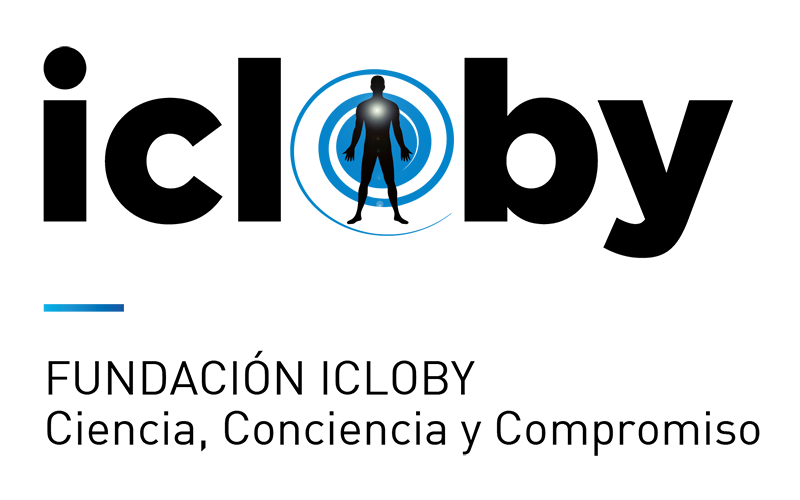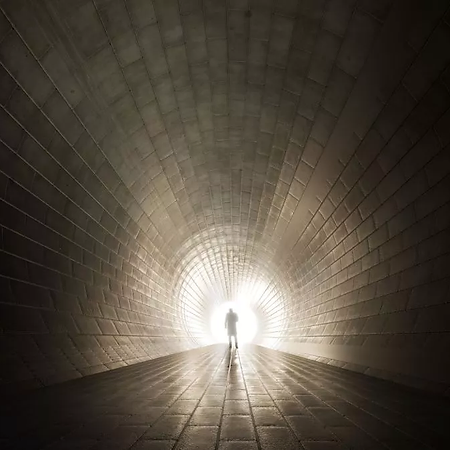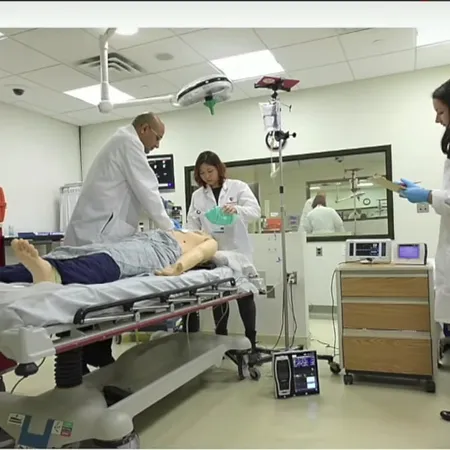Some people who have been on the verge of death claim that they have seen a light at the end of a tunnel, have had an out-of-body experience or have perceived things differently. There is a scientific explanation for these phenomena because they also occur in patients with certain neurological diseases..
Near-death experiences designate a set of phenomena reported by some people who have been about to die or in a very critical situation. There is evidence of them in different historical periods and in very diverse cultures., but the high degree of subjectivity that surrounds them makes their scientific study difficult. Even so, neurologists have connected the dots and have a plausible explanation for the most common appraisals of those who have been on the brink of losing their lives; above all, the vision of light at the end of the tunnel, out-of-body sensations and hallucinations.
It is tempting to speculate that these perceptions serve to prove that there is life after death., but Raymond Moody himself, the American psychiatrist who became famous in the years 70 for compiling in his book Life after Life the experiences of numerous people with near-death experiences, has recognized that his investigations do not provide any irrefutable proof that there is another form of existence. Another thing is what he is inclined to believe...
the neurologist Carlos Tejero Juste, of the Lozano Blesa University Clinical Hospital in Zaragoza and secretary of the Neuroimaging Study Group of the Spanish Society of Neurology (SEN), assures in statements to CuídatePlus that most of the experiences described by patients who have been about to die have a rational explanation that is related to brain alterations: “Some are very frequent and others are more rare, but almost all of them can be found in neurological diseases”. Therefore, It can be concluded that in certain critical situations, like a cardiac arrest, phenomena similar to those that occur in certain pathologies of the brain are produced.
"Neurologists have spent some time investigating why these alterations occur in patients who have near-death experiences", says the expert. But the analysis must be very cautious due to the great variability that can be seen in the narrations of those affected and the various situations they go through. So, The story of a person who has nearly fallen from a building and thought they were dying cannot be considered in the same way as that of another who has experienced an episode of sudden death.. The subject of the second assumption has had to be revived because his heart has been stopped for a while, with the consequences that come with it.
But even after a cardiac arrest, the versions of the patients can be very different. “The things they tell us may be subject to cultural influences or external situations that can make the information they provide us questionable”, says the neurologist. Instead, considers that children, not being so conditioned from the cultural point of view, “they offer a fairly reliable account”.
Despite possible biases due to the context in which near-death experiences occur, the comparison with the symptoms of patients with neurological alterations due to different diseases allows a fairly accurate scientific approach.
VISION OF A LIGHT AT THE END OF THE TUNNEL
Is there any explanation for the vision of a tunnel with a light at the end that some people who have been on the verge of death claim to have seen?? Alterations that occur in a specific region of the brain produce that perception similar to looking down the barrel of a shotgun, so that the side vision is obscured and only the background is illuminated. This is how Tejero explains it: "Neurologists see cases of people in whom the occipital cortex of the brain is with a low blood circulation contribution. These individuals have a sensation of narrowing of the visual field..
It can also be due to alterations in the retina, which, according to the specialist, "is prepared so that the area of central vision, which is the most useful for us, be the best vascularized at all times”. That's why, when ischemia or lack of blood supply occurs in the retina for various reasons, the last thing to be lost are the cells in the center.
It should be noted that the occipital cortex is responsible for processing visual stimuli. Within this region, says the neurologist, “central vision also occupies a larger space than peripheral vision”. In fact, It has been found that alterations in the cerebral cortex responsible for peripheral vision can occur that maintain central vision and this sensation can also be compared to seeing a light at the end of the tunnel.. And this has been verified in people with occipital trauma, stroke, migraine o epilepsy, among other diseases.
EXTRACORPOREAL PERCEPTION
The out-of-body experience is the sensation of floating in the air projected outside the body, or simply being outside of one's own body. The explanation for this phenomenon lies in alterations in another region of the brain.: parietal lobe cortex. It is an area that is in charge of situating us permanently. Among other things, "It tells us if we are sitting or standing and what is the position of our body in space", resume Tejero.
Some patients with epilepsy, migraine or lesions in the parietal lobe sometimes experience the feeling that their body does not belong to them and they are outside of it. And also those who have lived near-death experiences. "But it's not about them seeing themselves in the hospital bed; that has no explanation", points out the representative of the Spanish Society of Neurology.
HALLUCINATIONS AND OTHER VISUAL PHENOMENA
The feeling of seeing things differently, often deformed, just as the hallucinations reported by some people who have been about to die also have a reflection in other brain alterations that do not have to be related to a vital risk. In this case, The occipital lobe is also responsible and those who experience these phenomena may have suffered lesions in that area of the brain due to a stroke or suffer from migraine., among other possible origins. To designate these cases, the term of Alice in Wonderland syndrome because the same thing happens as in the famous novel: suddenly, the affected person sees that the objects are getting big and has the feeling that it is he who is getting small; or vice versa, and perceives that things become great. This syndrome is also associated with the vision of deformed objects, among other symptoms. “It is believed that what the writer Lewis Carroll described was a phenomenon that happened to him, probably because he had an occipital lobe migraine”, says Tejero.





